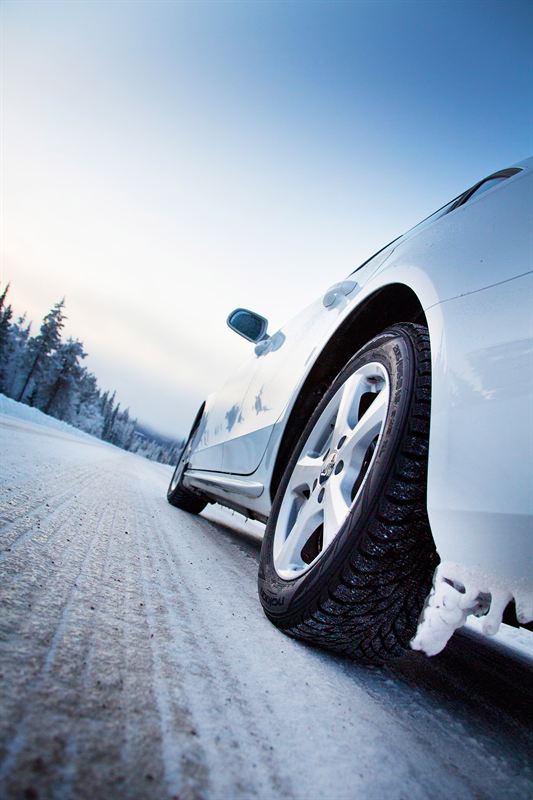If you live where the snow flies, you've seen overconfident drivers blow by you on a snowy road and wondered if—and maybe even secretly hoped—they'd end up in a ditch. Whether they did or not, one thing's for sure: you don't want to be that person.
And you don't have to be. Years of driving and testing cars (and winter tires) in wintry conditions have taught us that following these nine simple winter-driving rules will greatly improve your chances of arriving at your destination calm, collected, comfortable, and—most important—safe.
1. Drive Super Smoothly
The key to safe driving in snow is being smooth with the steering wheel, accelerator, and brakes. Why? Jerky movements with the controls easily unstick tires that have a tenuous grip on the slippery road, so every turn of the wheel, push of the brakes, and movement of the throttle must
be deliberate, gentle, and gradual. Pretend there's a cup of scalding coffee in your lap and drive so as not to spill it.
2. Look Far Ahead
The slipperier it gets, the farther down the road you should look—and think. Anticipate what you'll need to do next. Slow way down for turns. Allow double the stopping distance when the road is wet, triple on snow, and even more on ice. Driving carefully and safely takes extra concentration.
3. Heed the Flashing Lights
How much traction do you actually have on a snowy road? One way to know before you get into trouble is to understand what one particular small, amber, flashing light in the instrument cluster means. (It's an outline of a car with squiggly lines behind it.) If you're accelerating in a straight line and this light is blinking, this is the stability-control system warning you that the wheels that drive the car are slipping. Heed it. And ease up on the accelerator so the tires regain their grip.
Heed it. And ease up on the accelerator so the tires regain their grip.
If you're turning and see a blinking amber light, this is also the stability-control system alerting you that the car is beginning to slide from your intended path. Again, ease back on the accelerator until you are no longer applying any throttle; this allows the car to regain grip. And do not accelerate aggressively when turning tight corners in town on snowy or slushy streets. Always ease into the accelerator so that nothing untoward happens abruptly.
4. Look Here!
If you feel your car beginning to skid, always, always, look where you want to go—not where the car is heading at that precise moment. Let your peripheral vision take care of whatever you're trying to avoid. Racing drivers know that you almost always end up where you are looking; that's one of the reasons they're so good at recovering from skids.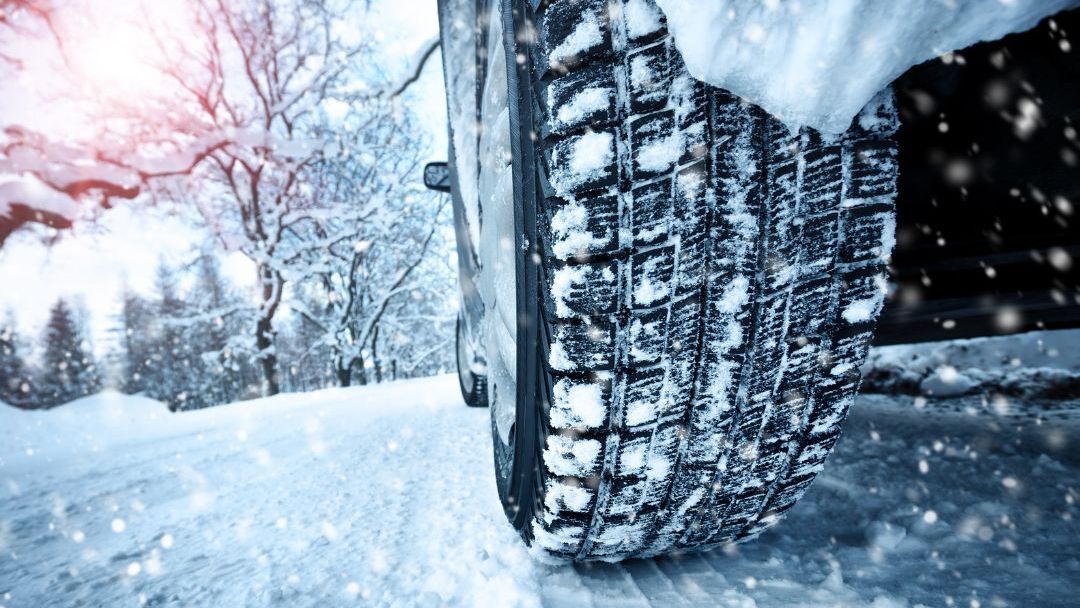
5. Deal with the Skids
Sooner or later you will hit a slick spot and get a queasy feeling in the pit of your stomach as your car starts to slide away from the direction in which you want to be heading. Skids, even big ones, can be managed, and you can bring the car back under full control in short order. First, don't panic—and don't stab the brakes! Instead, do the following:
For a front-wheel skid—where the front tires lose grip and the car turns in a wider arc than you expect—ease off the gas. In a beat or two, the front tires should regain traction. Then aim where you want to go as your traction returns.
For a rear-wheel skid—where the rear tires lose traction and you feel yourself beginning to spin out—quickly turn the steering wheel in the same direction that the rear is sliding. If, say, the rear is swinging to the left, turn the wheel to the left. Ease off the accelerator and stay off the brakes. As the rear wheels regain traction, steer back in the original direction.
Ease off the accelerator and stay off the brakes. As the rear wheels regain traction, steer back in the original direction.
No matter which type of skid you're experiencing, make sure you keep your wheels pointed in the direction you want to be going. And you can gently (remember point number one) use your brakes if you think you can recover without hitting anything. If an impact is imminent, don't be afraid to stand on the brake pedal as described in point number six.
6. Use Your Anti-Lock Brakes This Way
If all else fails and you need to stop as quickly as possible in snow or on ice, it's time to engage the help of your car's anti-lock-brake system (ABS). All new vehicles on the road today are equipped with anti-lock brakes, which use an onboard computer to optimize the car's braking in extreme conditions. If you are in a skid from which you can't recover or you need to avoid an obstacle—and your vehicle has ABS—push the brake pedal down hard, and don't let up. The computer will do the rest, keeping each wheel braking as aggressively as possible based on the available traction.
The computer will do the rest, keeping each wheel braking as aggressively as possible based on the available traction.
The amazing thing about ABS systems is that you can keep the brake pedal fully depressed while steering around obstacles; the computer will adjust the braking force at each wheel to allow you to maneuver while simultaneously slowing down. So in an emergency, don't just jam on the brakes—keep steering!
No safety system can ensure you avoid all accidents, but anti-lock brakes undoubtedly have saved many drivers from disaster. Note: most ABS systems cause the brake pedal to shudder when they activate to let you know they're working, so don't lift off the brakes when you feel this vibration; it's perfectly normal.
7.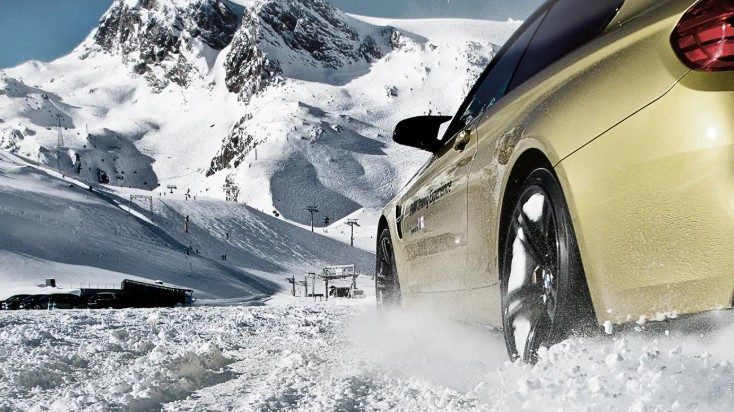 Constantly Assess Your Traction
Constantly Assess Your Traction
In the course of almost any snowy drive, your available traction will ebb and flow as road and weather conditions change along the route. In addition to the warning lights from the traction-control and stability-control systems, your anti-lock-brake system can help you assess how much grip you have on snow-covered roads. Here's how: Make sure there are no cars close to you, then apply the brakes gently for a second or two while driving in a straight line. If you feel the brake pedal chattering underfoot but detect minimal deceleration, the ABS system has activated, and you can rest assured the road beneath your tires is very slick. If you can slow down at a reasonable rate without ABS activating, you're on a more grippy surface. Once again, be sure there are no other cars around you that will be bothered by your unexpected slowing. Some anti-lock-brake systems will also flash a small amber light in the instrument cluster while ABS is working, so this can be another clue to low traction when you are brake-testing for grip.
Ezra Dyer|Car and Driver
8. Beware All-Wheel Drive
Vehicles equipped with all-wheel drive or four-wheel drive can lull you into a false sense of security on slick roads. They send their power to all four wheels rather than just two, which on slippery surfaces enables impressive, slip-free acceleration, especially from rest— which can make it feel as if you have much more traction than you actually do. Don't be fooled; these systems don't in any way improve your vehicle's ability to turn or stop in snowy conditions, so expect it to behave just like any other "normal" vehicle when you push on the brake pedal or turn the steering wheel. If you want to assess how much traction you have, you can employ the technique described in the previous step.
9. Fit Winter Tires
Technically this isn't a driving tip—it's a survival tip. That's because fitting a set of four winter tires (more commonly called "snow tires") is actually the best thing you can do to improve your safety margin and reduce your anxiety level on those awful snow-covered roads. Proper winter tires provide far more traction in snow, slush, and on ice than even the best set of all-season tires. We at Car and Driver test winter tires and install them on all of our long-term vehicles, and we have some top suggestions for your vehicle.
That's because fitting a set of four winter tires (more commonly called "snow tires") is actually the best thing you can do to improve your safety margin and reduce your anxiety level on those awful snow-covered roads. Proper winter tires provide far more traction in snow, slush, and on ice than even the best set of all-season tires. We at Car and Driver test winter tires and install them on all of our long-term vehicles, and we have some top suggestions for your vehicle.
10. Read the Road
Is the surface shiny or dull? Is there a uniform coating of powder, or bare spots interspersed with snow in the shade? Is the temperature cold enough to ensure crunchy, light, snow, or is it warm enough to create a slushy mess? While you can stop the car and get out to assess the surface if you're in doubt (and that's not a bad idea), you can learn a lot about available traction just by knowing what you're looking at. In general, shiny is bad, since that means either ice or water. Shady spots are deceptive, since dry pavement ahead of them can lead to a false sense of security. And dry snow is much better than slushy slop. Dry snow actually offers pretty good traction—think of the crunch beneath your boots—whereas slush behaves like deep water, with the tires riding up on top of it.
In general, shiny is bad, since that means either ice or water. Shady spots are deceptive, since dry pavement ahead of them can lead to a false sense of security. And dry snow is much better than slushy slop. Dry snow actually offers pretty good traction—think of the crunch beneath your boots—whereas slush behaves like deep water, with the tires riding up on top of it.
11. Plan Ahead
We already mentioned looking as far ahead as possible, and that's a good idea in general. But chances are, you're driving in familiar territory, so you can use that knowledge to your advantage, too. When you head down that hill, is there an equal climb on on the other side of the valley? Maybe conserve momentum for that. Is there an off-camber downhill left a quarter-mile away? You don't have to wait till you see it to slow down. If you know what's coming, drive like you're your own rally navigator and think a few steps ahead.
12.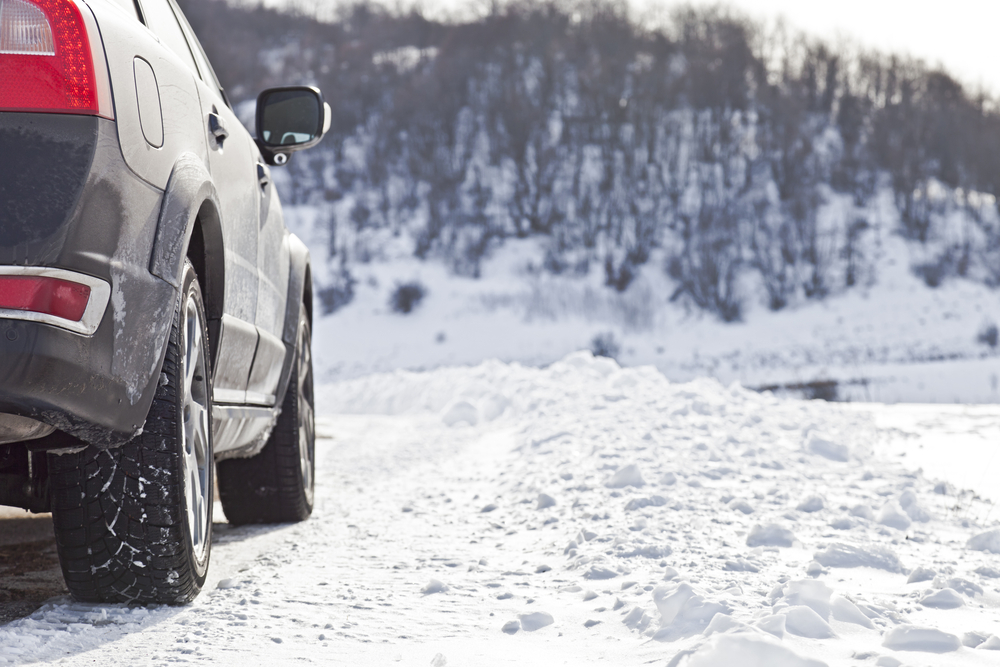 Carry the Right Supplies
Carry the Right Supplies
There've been times—usually when we're halfway through relocating a snowbank with our hands—that we've declared that we'd pay $500 for a snow shovel. The better solution is to throw one in your car before you leave, along with a bag of salt and a tow strap. If you're really concerned about your winter trek, you can get your tow eye ready, too. The tow eye screws into a threaded socket (usually behind a square plastic cover that pops out of the bumper) and can be used to attach a tow strap to vehicles that don't have a hitch or bumper-mounted tow hooks. The tow eye is usually under the rear cargo floor, with the spare tire, so if you think you need it, don't stack a quarter-cord of firewood back there before you set off.
This content is imported from OpenWeb. You may be able to find the same content in another format, or you may be able to find more information, at their web site.
Can you drive snow and winter tires year round? It’s an idea that occurs to many drivers who experience winter weather: If I have to mount snow tires every year, why don’t I just keep them on my vehicle all the time?
Unfortunately, using snow tires year round isn’t recommended. In the long run, it will cost more money than changing them out and could compromise your vehicle’s performance on the road. That’s why tire makers offer different types of tires for different seasons – the best option for you is determined by many factors including climate, driving style, and performance needs.
In the long run, it will cost more money than changing them out and could compromise your vehicle’s performance on the road. That’s why tire makers offer different types of tires for different seasons – the best option for you is determined by many factors including climate, driving style, and performance needs.
Here are some specific reasons why year-round use of winter tires is not advised. And if it’s the hassle of tire mounting, unmounting, and remounting that you’re tired of, we’ve included an idea for simplifying that process, too.
All winter tires, whether studless or studded, are made to maintain better traction in extreme cold, and on icy, snowy, or slushy roads. The rubber is able to remain softer, which makes it more flexible, allowing the tire to conform to the road better in extremely cold conditions. This feature, along with deeper tread depths and specialized tread designs, are what make snow/winter tires ideal for inclement winter weather and extreme cold driving conditions.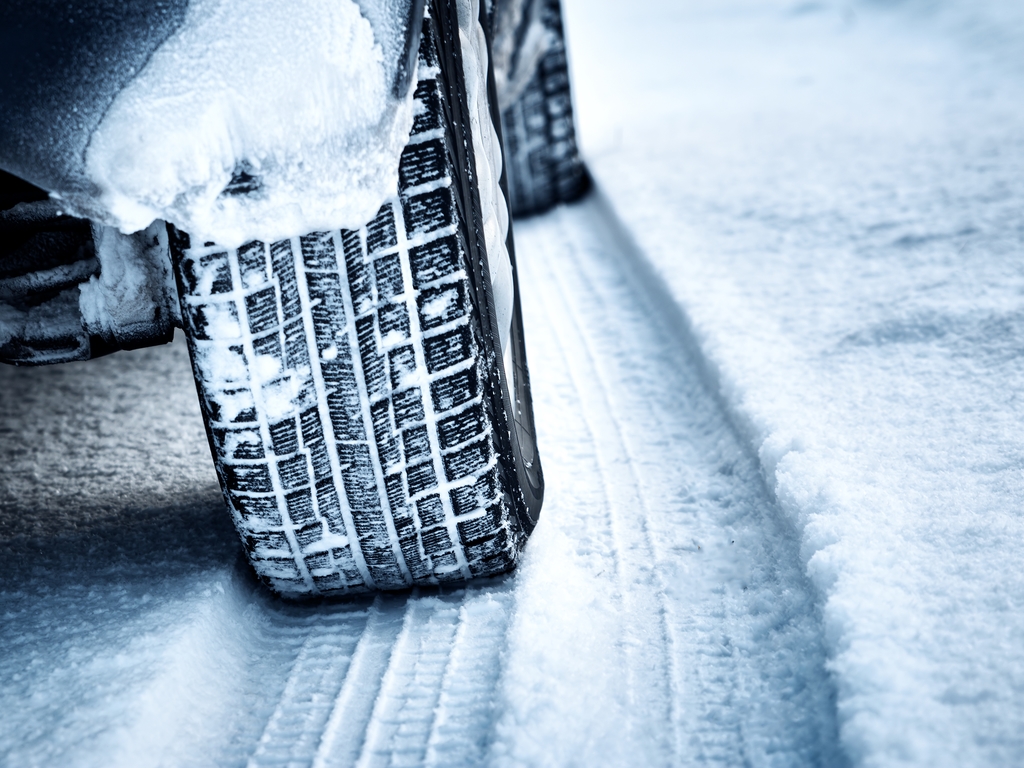
We use this analogy - tennis shoes. Yes, you can wear tennis shoes on the beach or in the snow, but wouldn't it be better to have flip flops on the beach and boots for the snow? Winter tires are like snow boots for your car.
Winter tires are specially designed for cold temperatures and winter precipitation. Once it gets warm, you won't need deep tread depths to handle snow or biting edges for traction on ice. Here are some specific reasons why using winter tires year round is not recommended.
Faster wear on warm, dry pavement - the tread rubber of winter tires is considerably more flexible than that of all season and summer tires. That same pliable tread rubber that adds traction in winter will wear down quickly in warm temperatures. Summer and all-season tires are built to withstand warm temperatures, providing long wear life.
Decreased performance - In warm weather, winter tires won't provide the same handling capabilities as summer or all-season tires.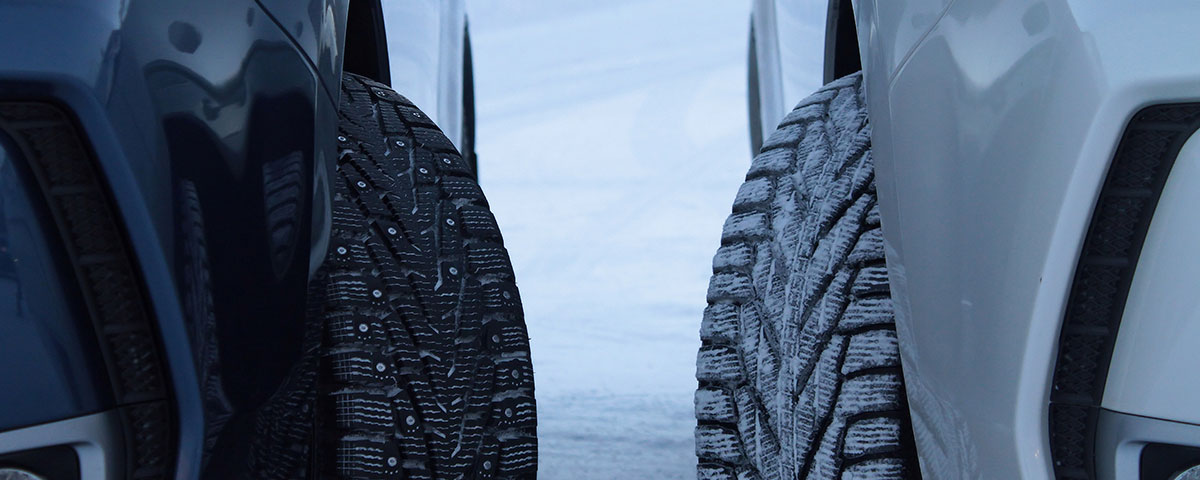 Imagine if you needed to make a quick maneuver and your tires were soft and squishy. You won't get the crisp response from a winter tire in warm weather. Winter tires need that flexibilitity to handle ice and snow, but it's not as useful in warm weather.
Imagine if you needed to make a quick maneuver and your tires were soft and squishy. You won't get the crisp response from a winter tire in warm weather. Winter tires need that flexibilitity to handle ice and snow, but it's not as useful in warm weather.
The specialized compounds and tread designs of winter tires are not designed for optimal warm climate performance and wear. Generally speaking, the softer tread of a winter tire will wear out faster in warmer temperatures. If you keep winter tires on your vehicle after winter has come and gone, you will have to replace them sooner than had you removed them for springtime.
That’s why using snow tires year round is more expensive than mounting them seasonally. The sooner they wear out, the sooner you have to replace them.
Driving on snow tires year-round could compromise optimal tread wear and ultimately be more expensive than just changing tires out for the season.
If you were considering year-round use of winter tires because you were tired of having to change them, here’s an idea that could save you time and money. Purchase wheels with the same diameter and bolt pattern as your current wheels. Mount your snow tires on those and store them in the garage until winter arrives.
Purchase wheels with the same diameter and bolt pattern as your current wheels. Mount your snow tires on those and store them in the garage until winter arrives.
Instead of having to change out your tires each season, just have a technician change the wheels. It’s a quick, relatively inexpensive alternative to mounting and unmounting snow tires every season.
Even with the best snow tires on the market, changing temperatures affect their ability to grip the road's surface. Listen to the pros, and know what to expect when the thermometer drops.
Learn More
Even with the best snow tires on the market, changing temperatures affect their ability to grip the road’s surface. Listen to the pros, and know what to expect when the thermometer drops.
LEARN MORE
Can winter tires be used in summer?
When the weather turns hot in summer, both temperature and road conditions change. And although it seems quite logical to change the tires on the car when the season changes, not all drivers have time to do it on time. Moreover, some believe that winter tires from European manufacturers are designed for the "European winter", which is supposedly soft, so you can use such tires in Russia in the summer. Is this really true and what is the potential cost of a mistake?
And although it seems quite logical to change the tires on the car when the season changes, not all drivers have time to do it on time. Moreover, some believe that winter tires from European manufacturers are designed for the "European winter", which is supposedly soft, so you can use such tires in Russia in the summer. Is this really true and what is the potential cost of a mistake?
How a winter tire differs from a summer one
The differences are primarily due to the different conditions in which winter and summer tires operate, when it is required to provide maximum grip and driving stability, based on temperature and asphalt conditions. Therefore, there are differences in the production technology of winter and summer tires. An all-season tyre, which occupies an intermediate position between a summer and a winter tire, however, in the heat, it does not perform as well as a summer tire, and in a cold, not as well as a winter one. Thus, a pneumatic tire is a winter tire if the design of the tire, the rubber compounds used in its production, and the tread pattern are specially designed to guarantee increased grip on icy and snow-covered surfaces compared to a conventional summer tire.
Winter tires must be marked with the symbols "M+S" or "M&S" or "M S". The manufacturer of a winter tire, in addition to this mandatory marking, may apply an additional marking in the form of a snowflake against the background of a three-headed mountain peak:. This marking indicates that the winter tire is suitable for operation in severe winter conditions, including dense and packed snow, which is confirmed by the high results of special test tests. Tires with such a pictogram are usually considered real winter tires. The designation “M + S” on tires literally translates as “mud and snow”. The developers of such tires sought to improve the performance of such tires when driving on mud, freshly fallen or beginning to melt snow. Many all-season tires can carry this label, but not all that have it are tested as tires for severe winter conditions. So, a real winter tire always has the “M + S” marking and the snowflake icon against the background of three mountain peaks at the same time.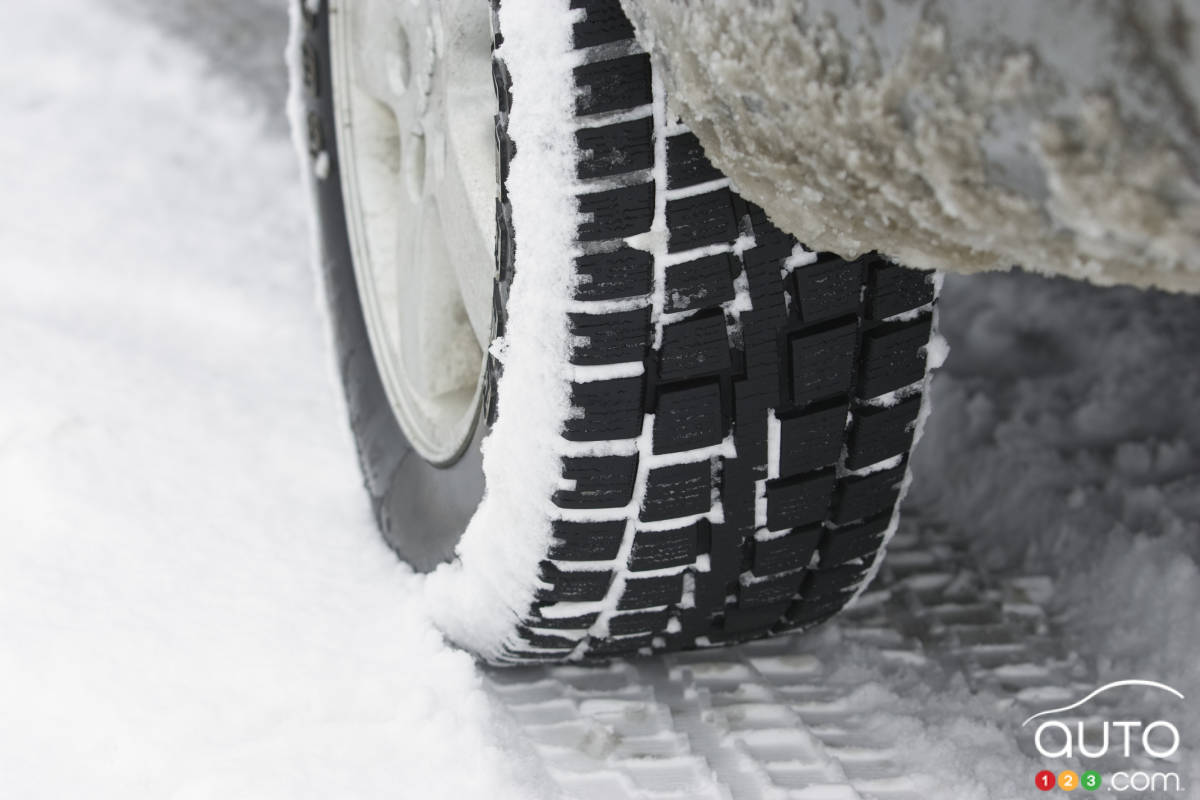
Differences in the rubber composition of winter and summer tires
In the manufacture of various elements of the tire, rubber compounds of different properties and purpose are used.
Compounds for winter tires must be such that the structural elements of winter tires retain their performance to the maximum extent possible in the temperature range characteristic of a particular climatic zone. Usually the range from positive 5 - 10°C to negative 40 - 45°C is implied. Unlike winter tires, the rubber compounds of summer tires must ensure the effective functioning of the tire at positive temperatures, up to 50 - 55°C. At a positive temperature close to 0°C, the functional characteristics of the rubber compounds of a summer tire noticeably decrease, and at negative temperatures they deteriorate sharply, which makes it very dangerous to use a summer tire in winter at a negative temperature.
Differences in tread pattern
Winter tires have a tread adapted to winter conditions. It is deeper, its elements are larger, the structure itself is more sparse. Numerous lamellas (narrow sipes, the width of which is 5-10 times less than the width of the other tread grooves), oriented in different directions, increase the controllability and braking efficiency of the car on snow and ice, as well as increase the grip of the tire on the winter road and the braking efficiency of the car . Winter tire tread grooves are usually wider and deeper than summer tire tread grooves. Unlike a summer tire, the tread pattern of a winter tire should provide not only effective water drainage, but also the removal of a mixture of snow and water (snow-water sludge) from the contact patch of a winter tire with the road. In addition, the tread of some winter tires can be equipped with anti-skid studs, which provide increased grip on ice and packed snow. For any tire, the norm of the residual tread depth is set by law, upon reaching which the tire must be removed from service. The tire manufacturer must provide for the presence in the tread pattern of indicators that the tread wear limit has been reached, which help the driver to understand in a timely manner that the tread depth is the minimum permissible and the operation of such a tire should be immediately discontinued.
It is deeper, its elements are larger, the structure itself is more sparse. Numerous lamellas (narrow sipes, the width of which is 5-10 times less than the width of the other tread grooves), oriented in different directions, increase the controllability and braking efficiency of the car on snow and ice, as well as increase the grip of the tire on the winter road and the braking efficiency of the car . Winter tire tread grooves are usually wider and deeper than summer tire tread grooves. Unlike a summer tire, the tread pattern of a winter tire should provide not only effective water drainage, but also the removal of a mixture of snow and water (snow-water sludge) from the contact patch of a winter tire with the road. In addition, the tread of some winter tires can be equipped with anti-skid studs, which provide increased grip on ice and packed snow. For any tire, the norm of the residual tread depth is set by law, upon reaching which the tire must be removed from service. The tire manufacturer must provide for the presence in the tread pattern of indicators that the tread wear limit has been reached, which help the driver to understand in a timely manner that the tread depth is the minimum permissible and the operation of such a tire should be immediately discontinued.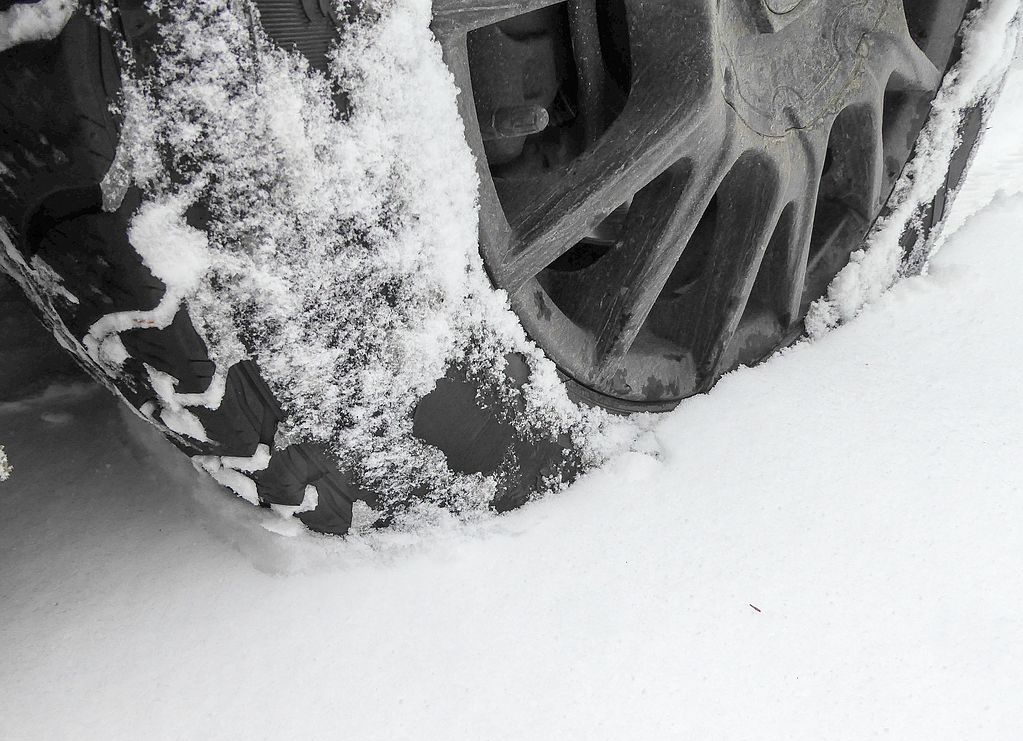 For a winter passenger tire that is operated on an icy or snowy road surface, this rate is 4 millimeters.
For a winter passenger tire that is operated on an icy or snowy road surface, this rate is 4 millimeters.
The tread pattern of a summer tire is designed taking into account the specifics of tire operation in summer conditions, usually these are good roads, high speeds, increased requirements for driving comfort, efficiency and mileage of a summer tire, and safety on wet roads. The number of sipes in the tread pattern of a summer tire is significantly less than that of a winter tire. The summer tire tread cannot be equipped with anti-skid studs. For a summer passenger tire, the legally established norm for the residual tread depth, upon reaching which the summer tire must be taken out of service, is 1.6 mm.
Effects of using a winter tire in summer
Winter tires have improved grip on snowy and icy roads. If you use winter tires on dry road surfaces, you may encounter a deterioration in vehicle handling, an increase in braking distances, an increased risk of aquaplaning, excessive heat generation in the tire, faster wear of the tread part of the winter tire, and a rather high level of noise generated by the tire.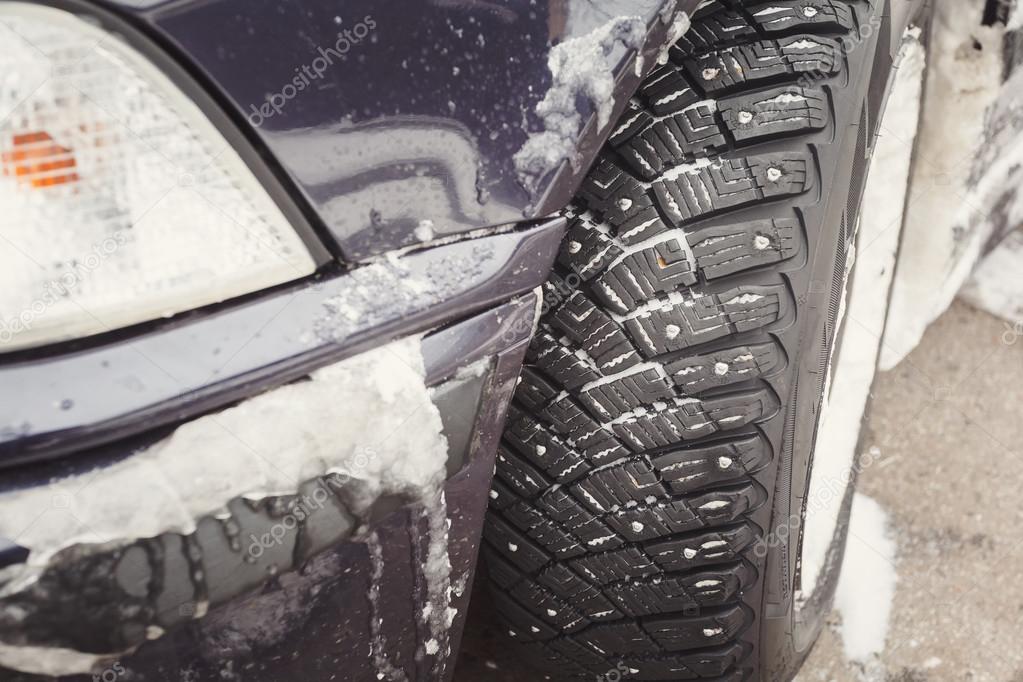 Winter studded tires destroy dry pavement with their studs, thereby causing harm not only to the road itself, but also to the environment. Winter tires are usually heavier than summer tires of similar size, the groove depth and saturation of the sipes in the tread pattern are greater, which leads to the deterioration of such an important tire property as fuel efficiency for motorists.
Winter studded tires destroy dry pavement with their studs, thereby causing harm not only to the road itself, but also to the environment. Winter tires are usually heavier than summer tires of similar size, the groove depth and saturation of the sipes in the tread pattern are greater, which leads to the deterioration of such an important tire property as fuel efficiency for motorists.
The time when it is necessary to change tires
As for the procedure for using winter tires, it is defined in the technical regulation of the Customs Union "On the safety of wheeled vehicles" (abbreviated as TR CU), which was approved by the Commission of the Customs Union in 2011, and entered into effect in January 2015.
In particular, the TR CU establishes that during the winter period (December, January, February) it is forbidden to operate vehicles that are not equipped with winter tires, but in the summer period (June, July, August) it is forbidden to operate vehicles equipped with winter tires.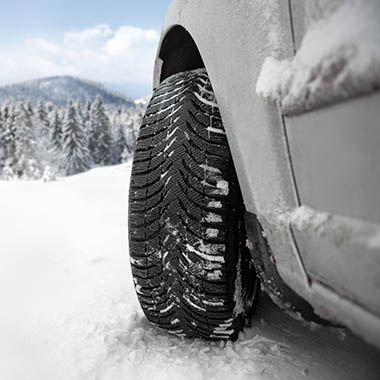 studded tires. Moreover, these time intervals can be changed by the relevant government bodies and changed only in the direction of expansion.
studded tires. Moreover, these time intervals can be changed by the relevant government bodies and changed only in the direction of expansion.
Thus, during the summer period (June, July, August), the law does not prohibit the operation of winter non-studded tires (sometimes they are also called friction, and in household jargon “Velcro”). But, nevertheless, these are winter tires and the manufacturers of these tires sought to put in them the maximum performance characteristics (and, above all, safety characteristics!), Which manifest themselves precisely on winter roads. It does not matter whether these tires are recommended for operation in severe winter conditions or in mild (sometimes the term "European") winter is used. In terms of safety, comfort, economy, winter studless tires cannot compete with tires specially designed for operation in the summer, namely, with summer tires.
With this in mind, tire manufacturers usually recommend replacing winter tires with summer tires if the average daily air temperature exceeds +7 °C.
(
Updated:
26/01/2022
)
Contents of article
Tire manufacturers do not recommend operating a car in summer if winter tires with a stud are installed on it.
Restrictions also apply to models with an all-season kit, the so-called Velcro.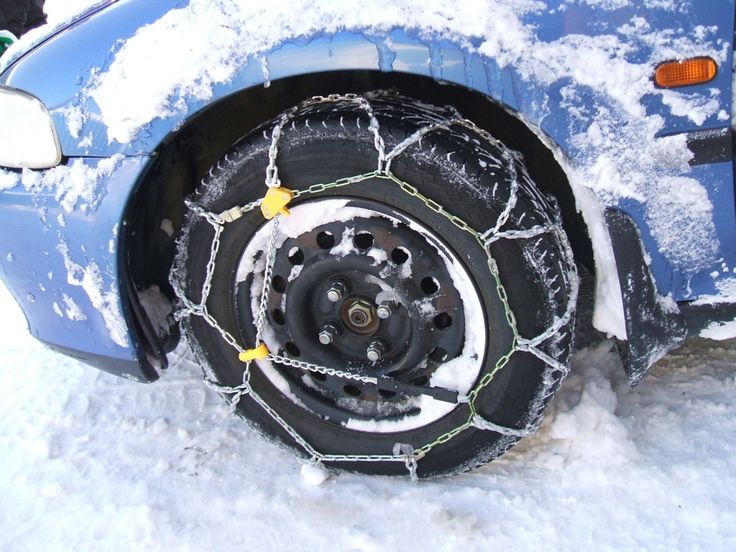 Such driving is extremely dangerous, since the rubber does not have the optimal composition to provide a stable grip. Even a cautious trip carries a big risk, as the length of the braking distance increases, maneuverability deteriorates, and steering difficulties appear.
Such driving is extremely dangerous, since the rubber does not have the optimal composition to provide a stable grip. Even a cautious trip carries a big risk, as the length of the braking distance increases, maneuverability deteriorates, and steering difficulties appear.
In addition to safety, riding winter tires in summer is unprofitable due to the elastic compound. It wears out quickly at high temperatures, which leads to uneven surface abrasion, cracking, and delamination. Due to the properties of the tires, the modified tread pattern and the depth of the grooves, the rolling resistance changes, and the adhesion to the surface decreases.
Winter tires differ from summer tires in tread pattern and rubber composition. If on models for warm weather large lamellas and longitudinal grooves are used, which are designed to drain water from under the contact patch, then a herringbone pattern is used on tires with a spike.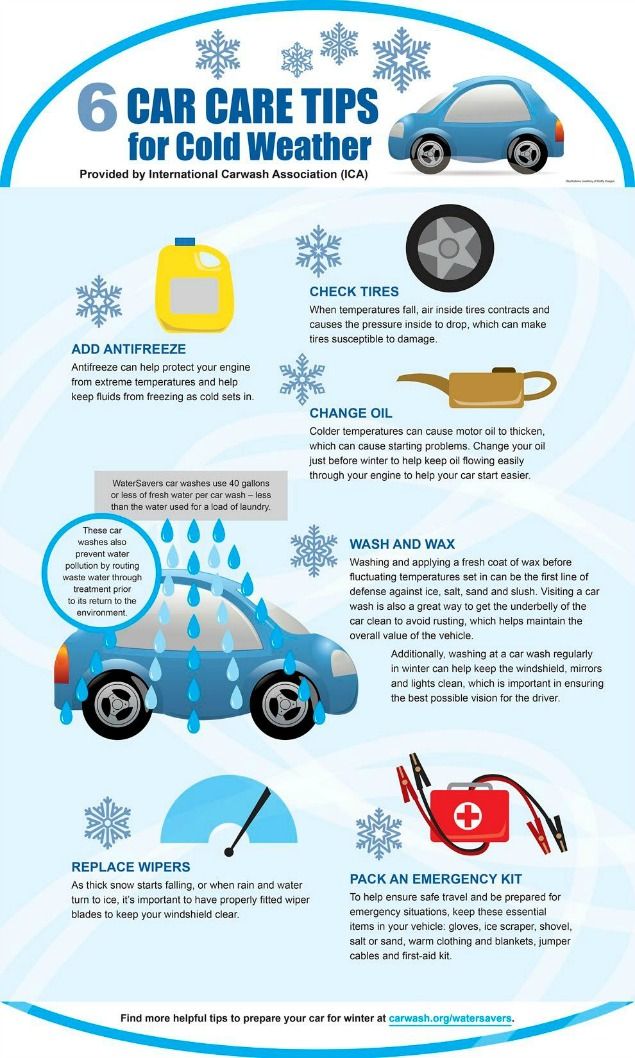 The large “checkered” has special slots that increase traction and handling on snow.
The large “checkered” has special slots that increase traction and handling on snow.
An important difference is the rubber composition. The set for operation in summer has a more rigid base, which tans and loses its properties at negative temperatures. Winter models are characterized by an elastic composition. It holds the road very well and is effective on ice.
Despite the obvious differences between the models, there is an opinion that motorists will not feel the difference when driving on winter tires. However, this is a misconception that has been refuted more than once by tire manufacturers. Comparative tests show that the use of tires out of season affects the handling of the car. The winter kit loses a lot to the summer models on wet pavement and during emergency braking. Wet coating and soft tread friction tires are incompatible, since this combination seriously reduces the stability of the car.
If you do not change winter tires for seasonal tires in summer, there is a high risk of encountering the following problems:
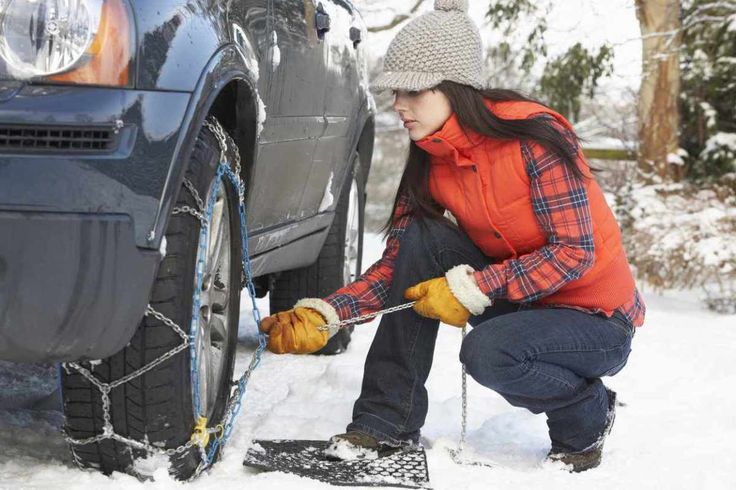
Summer Drive Protection Sound Comfort
Rating:
4.5
Tires Goodyear Eagle F1 Asymmetric 3 SUV
Summer Drive protection
Rating:
5
Tires Goodyear Eagle F1 SuperSport
Summer Drive protection
Tires Goodyear Eagle F1 SuperSport RS
Summer
Rating:
4.5
Tires Goodyear Eagle Sport
Summer Drive protection
Rating:
4. 5
5
Tires Goodyear Eagle Sport TZ
Summer Drive Protection Run On Flat
Rating:
4.5
Tires Goodyear EfficientGrip Performance
Summer Drive Protection Run On Flat
Rating:
4
Tires Goodyear Wrangler HP All Weather
Summer Drive protection
Rating:
4.5
Tires Goodyear EfficientGrip SUV
Today there is no law that regulates the right to use Velcro, studded tires or all season wheels in summer.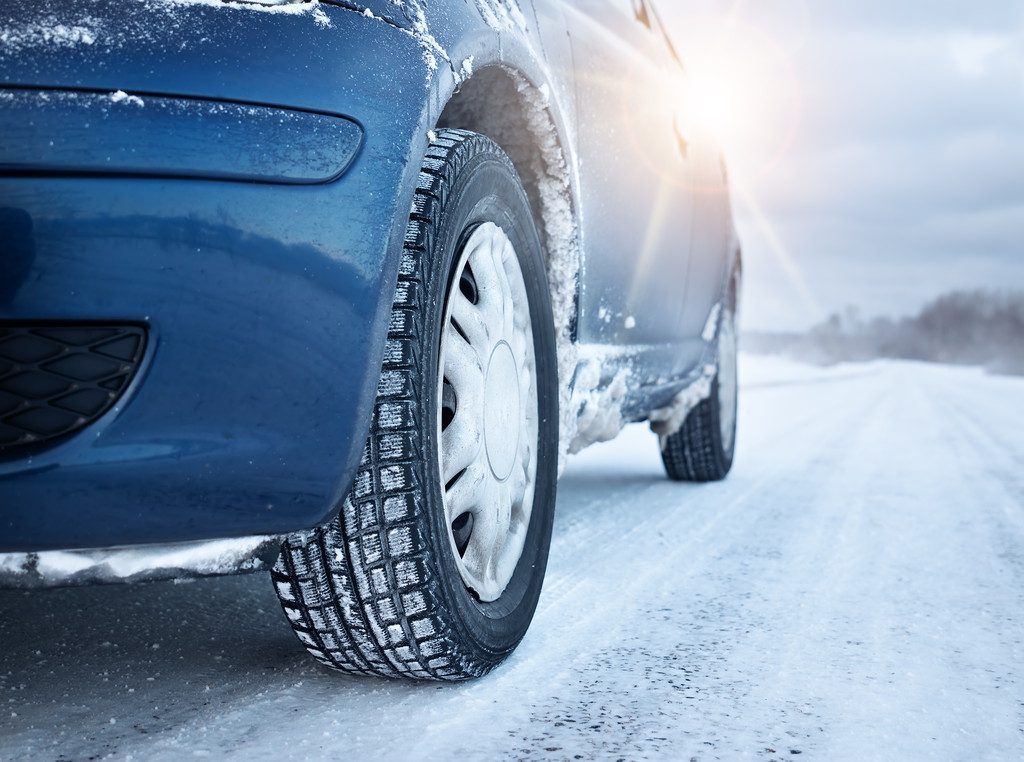 There are some amendments that make it difficult to operate the car. According to them, it is allowed by law to drive in the summer on rubber with a tread height of at least 1.6 mm. For winter tires, there is a 4 mm limit. Therefore, if the driver decides to roll a worn out friction kit without spikes in the summer, he needs to monitor the rest of the tread. There is a penalty for breaking the rule.
There are some amendments that make it difficult to operate the car. According to them, it is allowed by law to drive in the summer on rubber with a tread height of at least 1.6 mm. For winter tires, there is a 4 mm limit. Therefore, if the driver decides to roll a worn out friction kit without spikes in the summer, he needs to monitor the rest of the tread. There is a penalty for breaking the rule.
Although Russian legislation does not directly prohibit the use of friction tires in summer, the Customs Union strictly regulates this rule. According to the technical regulations, drivers are not allowed to drive on off-season tires. The Customs Union has established summer and winter periods during which tires that violate the requirement cannot be used. The document says that in the summer you can drive on regular tires from June to August, and on winter tires from December to February.
Technical regulations are valid throughout Russia, so you need to decide which tires to use based on these rules. Keep in mind that the timing of the onset of the seasons in different regions is different.
Keep in mind that the timing of the onset of the seasons in different regions is different.
There are many negative consequences that appear if you use a car with off-season tires. Let's consider them in more detail:
